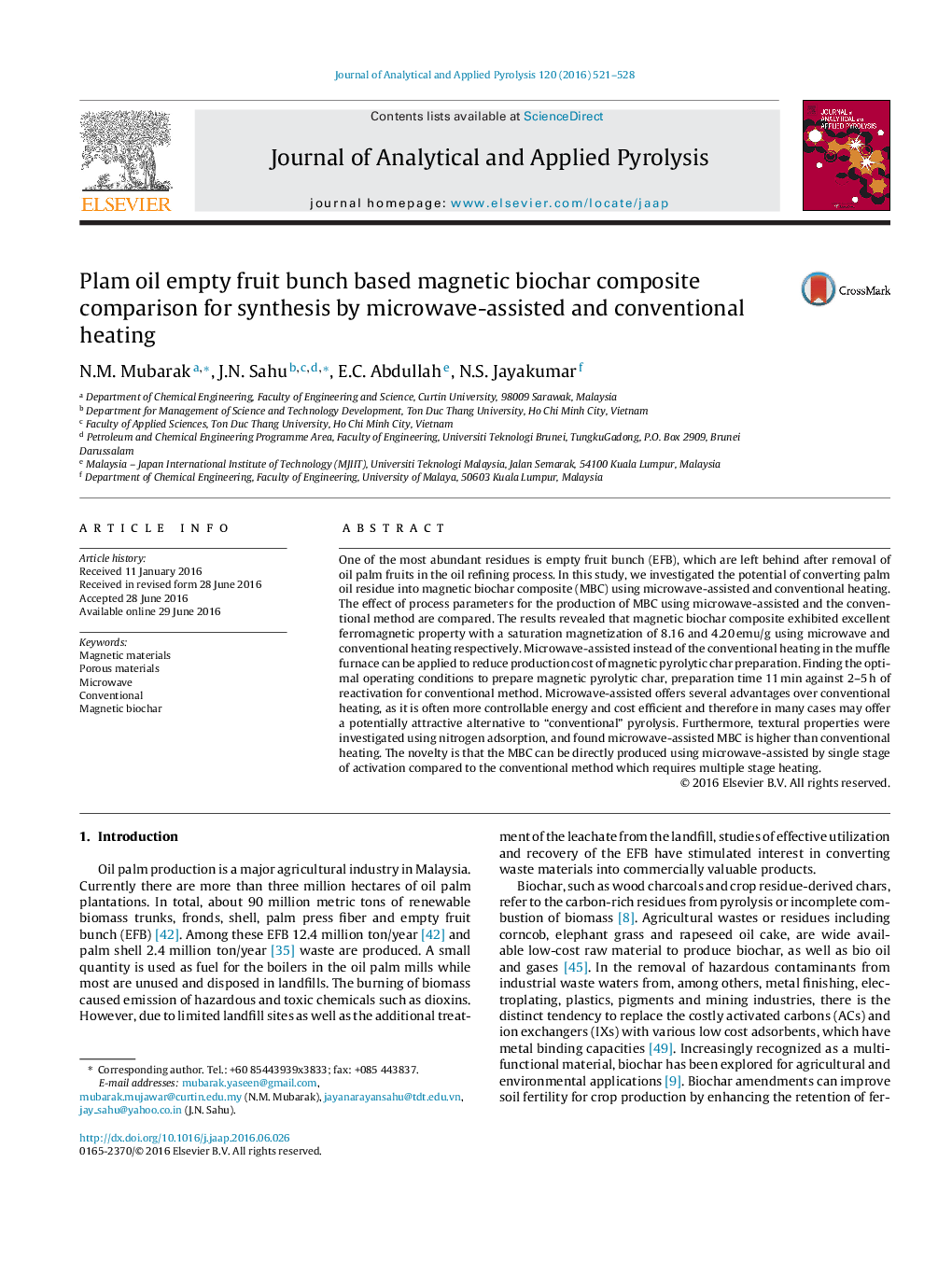| Article ID | Journal | Published Year | Pages | File Type |
|---|---|---|---|---|
| 1196580 | Journal of Analytical and Applied Pyrolysis | 2016 | 8 Pages |
•Synthesis of magnetic biochar via microwave & conventional heating was narrated.•Effect of each process parameters on synthesis of magnetic biochar was elaborated.•Magnetic biochar derived form EFB has excellent ferromagnetic properties.•Magnetic biochar has high yield, high surface area, high porosity.•Magnetic biochar adds new dimension to the materials as an adsorbent.
One of the most abundant residues is empty fruit bunch (EFB), which are left behind after removal of oil palm fruits in the oil refining process. In this study, we investigated the potential of converting palm oil residue into magnetic biochar composite (MBC) using microwave-assisted and conventional heating. The effect of process parameters for the production of MBC using microwave-assisted and the conventional method are compared. The results revealed that magnetic biochar composite exhibited excellent ferromagnetic property with a saturation magnetization of 8.16 and 4.20 emu/g using microwave and conventional heating respectively. Microwave-assisted instead of the conventional heating in the muffle furnace can be applied to reduce production cost of magnetic pyrolytic char preparation. Finding the optimal operating conditions to prepare magnetic pyrolytic char, preparation time 11 min against 2–5 h of reactivation for conventional method. Microwave-assisted offers several advantages over conventional heating, as it is often more controllable energy and cost efficient and therefore in many cases may offer a potentially attractive alternative to “conventional” pyrolysis. Furthermore, textural properties were investigated using nitrogen adsorption, and found microwave-assisted MBC is higher than conventional heating. The novelty is that the MBC can be directly produced using microwave-assisted by single stage of activation compared to the conventional method which requires multiple stage heating.
